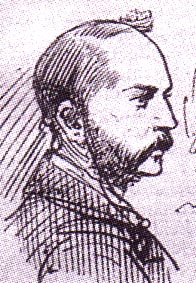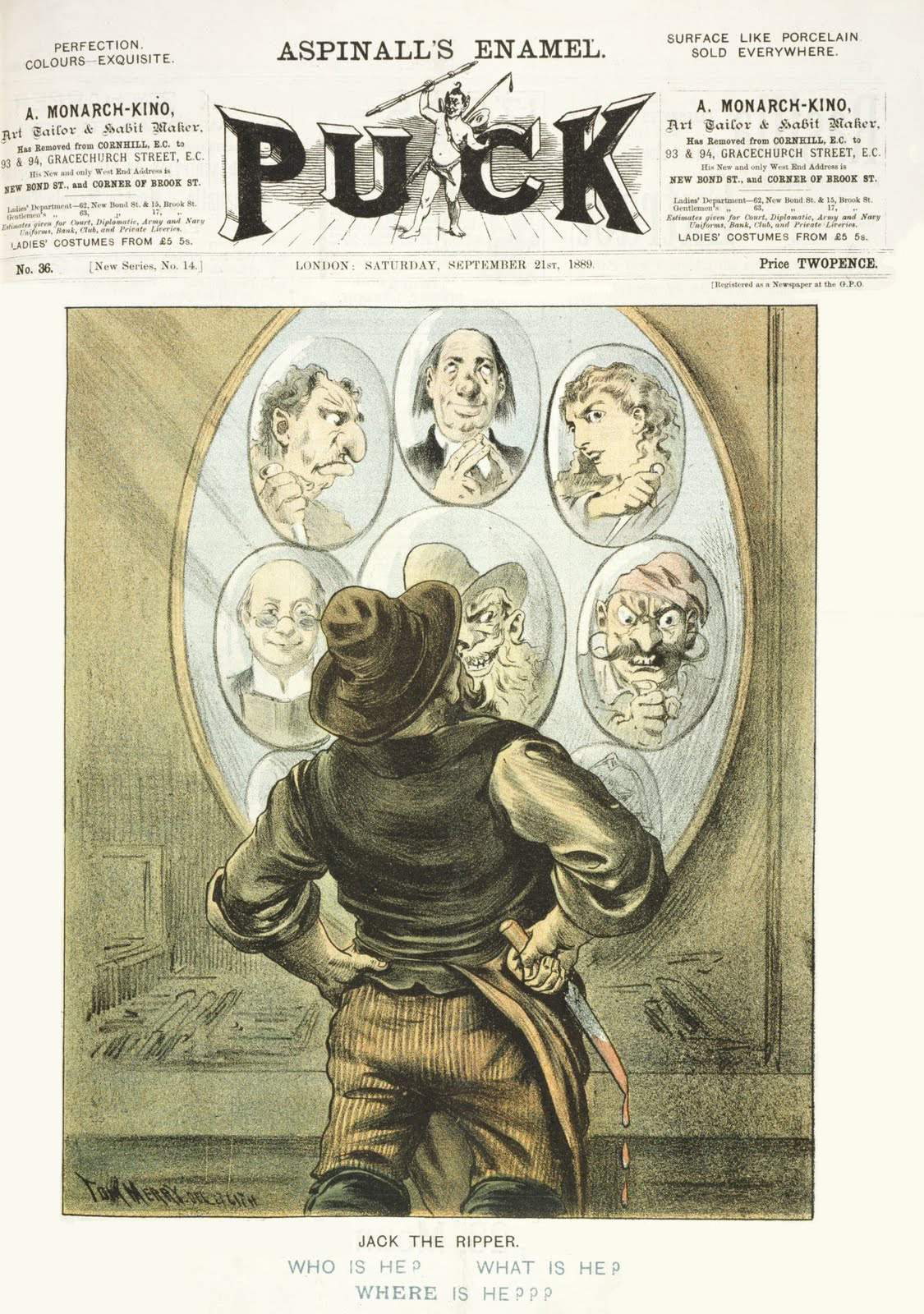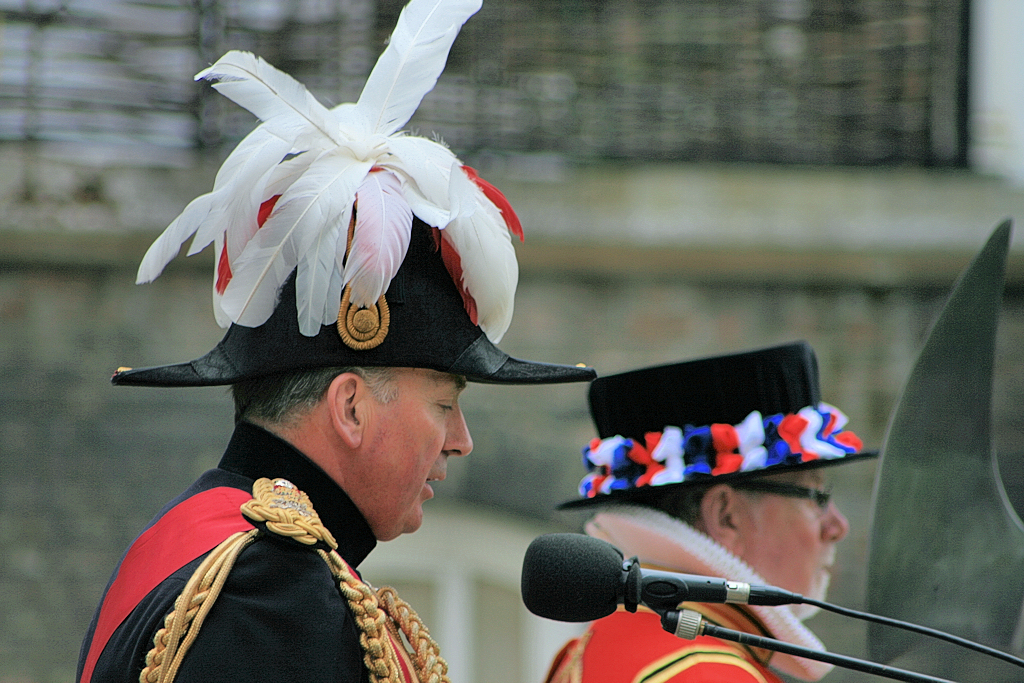|
Frederick Abberline
Frederick George Abberline (8 January 1843 – 10 December 1929) was a British chief inspector for the London Metropolitan Police. He is best known for being a prominent police figure in the investigation into the Jack the Ripper serial killer murders of 1888. Early life Born in Blandford Forum, Dorset, England, Abberline was the youngest son of Edward Abberline, a saddlemaker, sheriff's officer and clerk of the market, minor local government positions; and his wife Hannah ( Chinn). Edward Abberline died in 1849, and his widow opened a small shop and brought up her four children, Emily, Harriett, Edward and Frederick, alone. Police career Frederick was a clockmaker until he left home to go to London, where he enlisted in the Metropolitan Police on 5 January 1863, being appointed to N Division (Islington) with the Warrant Number 43519. PC Abberline so impressed his superiors that they promoted him to Sergeant two years later on 19 August 1865. On his promotion he moved to Y ... [...More Info...] [...Related Items...] OR: [Wikipedia] [Google] [Baidu] |
Blandford Forum
Blandford Forum ( ), commonly Blandford, is a market town in Dorset, England, sited by the River Stour about northwest of Poole. It was the administrative headquarters of North Dorset District until April 2019, when this was abolished and its area incorporated into the new Dorset unitary authority. Blandford is notable for its Georgian architecture, the result of rebuilding after the majority of the town was destroyed by a fire in 1731. The rebuilding work was assisted by an Act of Parliament and a donation by George II, and the rebuilt town centre—to designs by local architects John and William Bastard—has survived to the present day largely intact. Blandford Camp, a military base, is sited on the hills north-east of the town. It is the base of the Royal Corps of Signals, the communications wing of the British Army, and the site of the Royal Signals Museum. Dorset County Council estimates that in 2013 the town's civil parish had a population of 10,610. The town ... [...More Info...] [...Related Items...] OR: [Wikipedia] [Google] [Baidu] |
Whitechapel
Whitechapel is a district in East London and the future administrative centre of the London Borough of Tower Hamlets. It is a part of the East End of London, east of Charing Cross. Part of the historic county of Middlesex, the area formed a civil and ecclesiastical parish after splitting from the ancient parish of Stepney in the 14th century. It became part of the County of London in 1889 and Greater London in 1965. Because the area is close to the London Docklands and east of the City of London, it has been a popular place for immigrants and the working class. The area was the centre of the London Jewish community in the 19th and early 20th centuries. Whitechapel, along with the neighbouring district of Spitalfields, were the location of the infamous 11 Whitechapel murders (1888–91), some of which were attributed to the mysterious serial killer known as Jack the Ripper. In the latter half of the 20th century, Whitechapel became a significant settlement for the Briti ... [...More Info...] [...Related Items...] OR: [Wikipedia] [Google] [Baidu] |
Labourer
A laborer (or labourer) is a person who works in manual labor types in the construction industry workforce. Laborers are in a working class of wage-earners in which their only possession of significant material value is their labor. Industries employing laborers include building things such as roads, buildings, bridges, tunnels, and railway tracks. Laborers work with blasting tools, hand tools, power tools, air tools, and small heavy equipment, and act as assistants to other trades as well such as operators or cement masons. The 1st century BC engineer Vitruvius writes that a good crew of laborers is just as valuable as any other aspect of construction. Other than the addition of pneumatics, laborer practices have changed little. With the introduction of field technologies, the laborers have been quick to adapt to the use of this technology as being laborers' work. Tools and equipment The following tools are considered a minimum for a laborer to keep with them: hammer, plier ... [...More Info...] [...Related Items...] OR: [Wikipedia] [Google] [Baidu] |
Cleveland Street Scandal
The Cleveland Street scandal occurred in 1889, when a homosexual male brothel and house of assignation on Cleveland Street, London, was discovered by police. The government was accused of covering up the scandal to protect the names of aristocratic and other prominent patrons. At the time, sexual acts between men were illegal in Britain, and the brothel's clients faced possible prosecution and certain social ostracism if discovered. It was rumoured that Prince Albert Victor, the eldest son of the Prince of Wales and second-in-line to the British throne, had visited, though this has never been substantiated. Unlike overseas newspapers, the British press never named Albert Victor, but the allegation influenced the handling of the case by the authorities and has coloured biographers' perceptions of him since. The police acquired testimonies that Lord Arthur Somerset, an equerry to the Prince of Wales, was a patron. Both he and the brothel keeper, Charles Hammond, managed to flee ... [...More Info...] [...Related Items...] OR: [Wikipedia] [Google] [Baidu] |
Annie Chapman
Annie Chapman (born Eliza Ann Smith; 25 September 1840 – 8 September 1888) was the second canonical victim of the notorious unidentified serial killer Jack the Ripper, who killed and mutilated a minimum of five women in the Whitechapel and Spitalfields districts of London from late August to early November 1888. Although previous murders linked to Jack the Ripper (then known as the " Whitechapel murderer") had received considerable press and public attention, the murder of Annie Chapman generated a state of panic in the East End of London, with police under increasing pressure to apprehend the culprit. Early life Annie Chapman was born Eliza Ann Smith in Paddington on 25 September 1840. She was the first of five children born to George Smith, and Ruth Chapman. George Smith was a soldier, having enlisted in the 2nd Regiment of Life Guards in December 1834. Reportedly, the location of Chapman's earliest years revolved around her father's military service served between London ... [...More Info...] [...Related Items...] OR: [Wikipedia] [Google] [Baidu] |
George Chapman (murderer)
Seweryn Antonowicz Kłosowski (14 December 1865 – 7 April 1903), better known under his pseudonym George Chapman, was a Polish serial killer known as the Borough Poisoner. Born in Congress Poland, Chapman moved to England as an adult, where he committed his crimes. He was convicted and executed after poisoning three women, but is remembered today mostly because some contemporary police officers suspected him of being the notorious serial killer Jack the Ripper. Early life Seweryn Kłosowski was born to Antoni and Emilia Kłosowski in the village of (today part of Koło) in the Warsaw Governorate of Congress Poland. His father was a carpenter. According to a certificate found in his personal effects after his arrest, he was apprenticed at age 14 to a senior surgeon, Moshko (Mosze) Rappaport, in Zwoleń, whom he assisted in procedures such as the application of leeches for blood-letting. He then enrolled on a course in practical surgery at the Warsaw Praga Hospital. This ... [...More Info...] [...Related Items...] OR: [Wikipedia] [Google] [Baidu] |
List Of Proposed Jack The Ripper Suspects
A series of murders that took place in the East End of London from August to November 1888 was blamed on an unidentified assailant who was nicknamed Jack the Ripper. Since that time, the identity of the killer or killers has been widely debated, and over 100 suspects have been named. Though many theories have been advanced, experts find none widely persuasive, and some are hardly taken seriously at all. Due to the extensive time interval since the murders, the killer will likely never be identified despite ongoing speculation as to his identity. Contemporaneous police opinion Metropolitan Police files show that their investigation into the serial killings encompassed 11 separate murders between 1888 and 1891, known in the police docket as the " Whitechapel murders". Five of these—the murders of Mary Ann Nichols, Annie Chapman, Elizabeth Stride, Catherine Eddowes, and Mary Jane Kelly—are generally agreed to be the work of a single killer, known as "Jack the Ripper". Thes ... [...More Info...] [...Related Items...] OR: [Wikipedia] [Google] [Baidu] |
Constable
A constable is a person holding a particular office, most commonly in criminal law enforcement. The office of constable can vary significantly in different jurisdictions. A constable is commonly the rank of an officer within the police. Other people may be granted powers of a constable without holding this title. Etymology Historically, the title comes from the Latin '' comes stabuli'' (attendant to the stables, literally ''count of the stable'') and originated from the Roman Empire; originally, the constable was the officer responsible for keeping the horses of a lord or monarch.p103, Bruce, Alistair, ''Keepers of the Kingdom'' (Cassell, 2002), Constable Encyclopædia Britannica online The title was imported to the monarchies of |
Walter Dew
Detective Chief Inspector Walter Dew (17 April 1863 – 16 December 1947) was a British Metropolitan Police officer who was involved in the hunt for both Jack the Ripper and Dr Crippen. Early life Dew was born at Far Cotton, in Hardingstone, Northamptonshire, one of seven children to Walter Dew Sr (ca 1822-1884), a railway guard, and his wife Eliza (ca 1832-1914). His family moved to London when he was 10.ODNB As a boy Dew was not a natural scholar, and left school aged 13. As a youth Dew found employment in a solicitor's office off Chancery Lane, but not liking the work he became a junior clerk at the offices of a seed-merchant in Holborn. Later, he followed his father on to the railways, for on the 1881 census he is listed as a 17-year-old railway porter living in Hammersmith in London. However, in 1882 he joined the Metropolitan Police, aged 19, and was given the warrant number 66711. He was posted to the Metropolitan Police's X Division ( Paddington Green) in June ... [...More Info...] [...Related Items...] OR: [Wikipedia] [Google] [Baidu] |
Mary Ann Nichols
Mary Ann Nichols, known as Polly Nichols (née Walker; 26 August 184531 August 1888), was the first canonical victim of the unidentified serial killer known as Jack the Ripper, who is believed to have murdered and mutilated at least five women in the Whitechapel and Spitalfields districts of London from late August to early November 1888. The two previous murders linked to the Whitechapel murderer are unlikely to have been committed by Jack the Ripper, although the murder of Mary Ann Nichols was initially linked to this series, increasing both press and public interest into the criminal activity and general living conditions of the inhabitants of the East End of London. Early life Mary Ann Nichols was born Mary Ann Walker on 26 August 1845 in either Dean Street, off Fetter Lane in London, or Dawes Court, Shoe Lane (off Fleet Street), London. She was the second of three children born to Edward Walker, a locksmith (later a blacksmith), and Caroline (née Webb), a laundress.Begg ... [...More Info...] [...Related Items...] OR: [Wikipedia] [Google] [Baidu] |
Chief Inspector
Chief inspector (Ch Insp) is a rank used in police forces which follow the British model. In countries outside Britain, it is sometimes referred to as chief inspector of police (CIP). Usage by country Australia The rank of chief inspector is used in the New South Wales Police and South Australia Police. Victoria Police declassified the rank in the mid-1990s. In both forces, it is senior to the rank of inspector and junior to the rank of superintendent. The insignia consists of a crown, the same insignia as that of a Major in the army. Canada The Sûreté du Québec and the City of Montreal Police Service ('' Service de police de la Ville de Montréal'' or SPVM) utilize the rank of chief inspector. In both forces, the insignia consists of four gold stripes, similar to the former insignia of a colonel in the Canadian Army and Air Force. Until 1978, the SPVM used British-pattern insignia for the rank consisting of a crown over two pips, also utilizing the rank of assistant c ... [...More Info...] [...Related Items...] OR: [Wikipedia] [Google] [Baidu] |
Scotland Yard
Scotland Yard (officially New Scotland Yard) is the headquarters of the Metropolitan Police, the territorial police force responsible for policing Greater London's 32 boroughs, but not the City of London, the square mile that forms London's historic and primary financial centre. Its name derives from the location of the original Metropolitan Police headquarters at 4 Whitehall Place, which also had an entrance on a street called Great Scotland Yard. The Scotland Yard entrance became the public entrance, and over time "Scotland Yard" has come to be used not only as the name of the headquarters building, but also as a metonym for both the Metropolitan Police Service itself and police officers, especially detectives, who serve in it. ''The New York Times'' wrote in 1964 that, just as Wall Street gave its name to New York's financial district, Scotland Yard became the name for police activity in London. The force moved from Great Scotland Yard in 1890, to a newly completed build ... [...More Info...] [...Related Items...] OR: [Wikipedia] [Google] [Baidu] |









